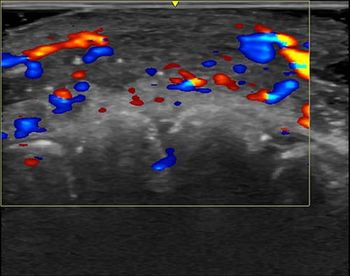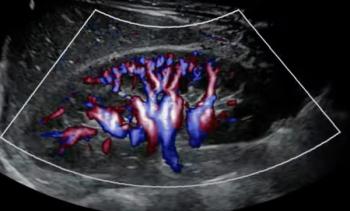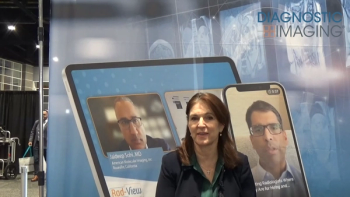
GE bid for Amersham foreshadows radical changes for medical imaging
Expansion into molecular medicine would transcend radiologyGE has stepped out of the corporate shadows in its bid for pharmaceutical and life sciences vendor Amersham, revealing a fundamental shift in its orientation. Deal makers
Expansion into molecular medicine would transcend radiology
GE has stepped out of the corporate shadows in its bid for pharmaceutical and life sciences vendor Amersham, revealing a fundamental shift in its orientation. Deal makers have framed the proposed merger, with a price tag of $9.5 billion, as a symbiotic convergence of imaging equipment and imaging agents. But it is much more. The deal would vastly expand GE's technology beyond medical imaging to include the molecular probes and life science technologies that may shape patient diagnosis, prognosis, and monitoring, as well as drug discovery, in the future. It could change the very character of the medical imaging industry.
"The emergence of molecular and personalized medicine is the blending of the imaging world with the pharmaceutical world," said Jeffrey Immelt, CEO and chairman of GE. "It allows you to go from the discovery of the basis of disease to how to diagnose and treat it. This puts GE in the heart of the most exciting part of medicine."
In talking up the deal with analysts, Immelt concentrated on how conventional technologies, such as CT and MR scanners, might evolve to reflect the unique capabilities of molecular-based imaging agents. Targeted radiopharmaceuticals and smart MR contrast agents, however, are years from commercialization. Hurdles include phased clinical tests and regulatory scrutiny for safety and efficacy. In vitro agents are less encumbered.
Amersham has achieved much of its early success in the development of genetically based diagnostic agents. These can help GE increase its interest in "personalized medicine," a phrase that cropped up in teleconferences held by GE and Amersham executives after the proposed deal was announced Oct. 10.
The tools of so-called personalized medicine in development at Amersham include cellular screening tests and other bioassays on protein, DNA analyses, purification systems, membrane products, and reagents. These are all critical to the development and manufacture of biopharmaceuticals for diagnosis and therapy. Through Amersham's merger with GE, these tools will become the means for opening a new chapter in medicine, according to Amersham chief executive Sir William Castell, who will become a vice chairman and member of the board of directors of GE.
"We will integrate all diagnostic information in front of the referring physician in such a way as to embrace not only today's diagnostics, but tomorrow's," he said. "We will move from yesterday's paradigm of medicine, which is largely empirical-'I feel ill, what's the diagnosis?-to a medicine that identifies disease before it becomes clinically important and allows us to better identify therapy and make sure that therapy is working."
A successful merger between GE and Amersham, or even the prospect of success, could prompt competitors to seek similar deals with other companies. These would be substantially different from the mergers that radiology vendors have done in the past. Deals such as Philips' with Marconi Medical and Siemens' with Acuson were consolidations. GE's proposed merger with Amersham is not.
"Amersham will allow us to accelerate molecular imaging," Immelt said. "It brings in tools for disease research and drug discovery. The evolution of molecular imaging makes GE and Amersham a great fit."
Slowing growth among traditional heavyweights, including plastics, jet engines, and gas turbines, amid a struggling global economy led GE strategists to look for other options. One of these, an expansion of medical technology, has been under way for some time. The company has aquired some 30 medical companies. The proposed merger with Amersham marks potentially the most significant change for GE Medical Systems.
If the deal goes through, GEMS will have a new name: GE Healthcare Technologies. Its headquarters will move from Milwaukee to London, where Amersham resides. Amersham chief executive Sir William Castell will become its new director. And its pro forma revenue stream for 2003 will jump from the current $10 billion annually to more than $13 billion.
Last year Amersham generated $2.4 billion: 41% from the company's biosciences, the rest from diagnostic pharmaceuticals including Omnipaque, Myoview, Omniscan, and Visipaque. With this balance in products, GE could gain a profitable revenue stream. Amersham also stands to gain from the union, as its global sales have flattened lately. Castell is counting on GE's presence and name recognition in other countries, particularly China, to boost sales of Amersham products.
To pull this off, Castell and Immelt must blend two very dissimilar companies and cultures during a hectic time for GE. The day prior to the Amersham announcement, GE closed its $2.1 billion purchase of Instrumentarium. The day before that, GE managers signed a deal merging Vivendi Universal's entertainment assets into GE's NBC network. Two months earlier, GE agreed to pay $5.4 billion for much of Dutch insurer Aegon NV's commercial-finance business, which operates in the U.S. and Europe.
Immelt acknowledges the challenge of managing these deals, but notes that GE is no stranger to M&A.
"We have a lot of talented people," Immelt said. "Each of the (deals/integrations) is being done by a separate team, so I put the execution risk at very low."
Newsletter
Stay at the forefront of radiology with the Diagnostic Imaging newsletter, delivering the latest news, clinical insights, and imaging advancements for today’s radiologists.




























